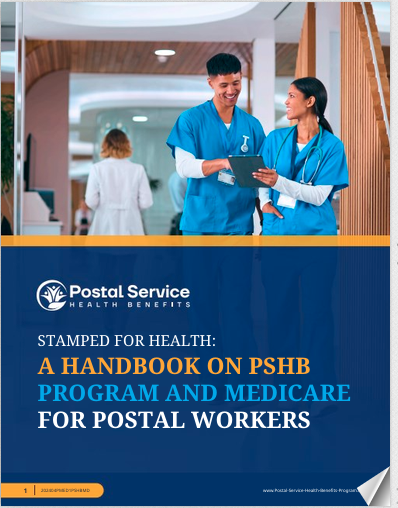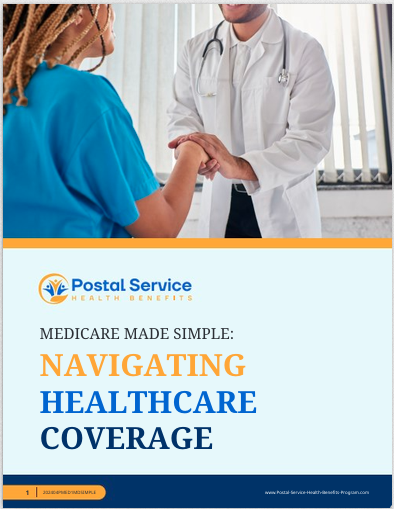Key Takeaways
- The USPS Health Benefits program will be replaced by the Postal Service Health Benefits (PSHB) program in 2025, impacting both current employees and retirees.
- Understanding these changes is crucial for all USPS employees to ensure they are adequately prepared for the transition.
Out With the Old, In With the New: USPS Health Benefits Are Getting a Major Makeover
As the United States Postal Service (USPS) continues to evolve in a rapidly changing world, significant changes are on the horizon for the health benefits provided to its employees and retirees. The Postal Service Health Benefits (PSHB) program, set to replace the current USPS Health Benefits in 2025, represents a substantial overhaul in the way health benefits are administered. This article explores the upcoming changes, their implications for USPS employees and retirees, and the steps necessary to navigate this transition successfully.
The Transition from USPS Health Benefits to PSHB
In a move that marks a significant shift in federal employee benefits, the USPS Health Benefits program will be phased out, with the PSHB program taking its place beginning in January 2025. This change is a result of the Postal Service Reform Act of 2022, which mandated the creation of a separate health benefits program specifically for postal workers.
The PSHB program will be administered by the Office of Personnel Management (OPM) and is designed to align more closely with the needs of USPS employees and retirees. The shift is not merely administrative; it represents a fundamental change in the way health coverage will be managed for postal workers.
Key Dates to Remember
- October 2024: Open season begins for PSHB enrollment.
- January 2025: The PSHB program officially replaces the USPS Health Benefits program.
These dates are crucial for all USPS employees and retirees, as failing to enroll in the PSHB program during the open season could result in a lapse in coverage. The transition period will be critical, and understanding the new requirements is essential.
How PSHB Differs from the Current USPS Health Benefits
The PSHB program introduces several changes that will affect both active employees and retirees. While many aspects of the new program will resemble the Federal Employees Health Benefits (FEHB) program, there are key differences:
1. Eligibility Requirements
Under the PSHB program, eligibility criteria will be more aligned with postal-specific needs. This change is intended to address the unique circumstances of postal employees, particularly those nearing retirement. Employees who do not meet the new eligibility requirements may need to explore alternative health coverage options.
2. Medicare Integration
One of the most significant changes under the PSHB program is the integration with Medicare. Starting in 2025, postal retirees who are 65 or older will be required to enroll in Medicare Part B to maintain their PSHB coverage. This integration aims to reduce the overall cost of health benefits for USPS by leveraging Medicare’s coverage for eligible retirees.
This requirement is a major shift from the current system, where enrollment in Medicare Part B is optional for postal retirees. The mandatory integration will require careful planning, particularly for those approaching Medicare eligibility.
3. Cost Implications
While specific cost details are not yet fully disclosed, the PSHB program is expected to offer a range of plans with varying premiums. It’s essential for USPS employees and retirees to carefully consider their options during the open enrollment period, as the cost of coverage could vary significantly depending on the plan chosen and the individual’s Medicare enrollment status.
Navigating the New Enrollment Process
Transitioning to the PSHB program will require USPS employees and retirees to actively engage in the enrollment process. The upcoming open season in October 2024 will be a critical time for making these selections. Here are some steps to ensure a smooth transition:
1. Stay Informed
USPS employees and retirees should stay informed about the latest developments regarding the PSHB program. Regular updates will be provided by OPM and USPS, and it is crucial to review this information carefully to understand the implications for your health coverage.
2. Evaluate Your Options
During the open season, employees and retirees will have the opportunity to compare different health plans offered under the PSHB program. It is advisable to consider factors such as plan costs, coverage options, and whether the plan integrates with Medicare. For those nearing retirement, understanding how the plan works with Medicare Part B is particularly important.
3. Seek Guidance
Navigating the complexities of the PSHB program may require professional guidance. USPS employees and retirees are encouraged to consult with licensed insurance agents who are knowledgeable about federal and postal employee benefits. These professionals can provide personalized advice based on individual circumstances, helping to make informed decisions during the open season.
The Impact on Retirees
The transition to the PSHB program will have a significant impact on postal retirees, particularly those who are already enrolled in the current USPS Health Benefits program. Retirees must understand the new requirements, especially the mandatory enrollment in Medicare Part B, to avoid any disruption in their coverage.
1. Medicare Part B Enrollment
For retirees who are 65 or older, enrolling in Medicare Part B will become a necessity to maintain their PSHB coverage. This enrollment requirement could lead to additional costs, as Medicare Part B involves a monthly premium. However, failing to enroll could result in the loss of PSHB coverage, making it essential for retirees to act promptly.
2. Transition Planning
Retirees should begin planning for the transition to the PSHB program well before the January 2025 deadline. This planning should include reviewing current health coverage, understanding the new plan options under PSHB, and budgeting for any additional costs associated with Medicare Part B.
Preparing for the Future
The transition to the PSHB program is part of a broader effort to modernize the benefits offered to USPS employees and retirees. While change can be challenging, it also presents an opportunity to reevaluate health coverage and ensure it meets current and future needs.
1. Long-Term Considerations
As USPS employees and retirees prepare for the switch to PSHB, it’s important to consider long-term health care needs. The integration with Medicare Part B could offer more comprehensive coverage for retirees, but it also requires careful financial planning. Understanding how these benefits will evolve over time is key to making informed decisions.
2. The Role of OPM
The Office of Personnel Management will play a central role in administering the PSHB program. USPS employees and retirees should be aware that OPM will provide resources and support during the transition. Regularly checking the OPM website for updates and attending any informational sessions offered will be beneficial.
A New Era for USPS Health Benefits
The introduction of the Postal Service Health Benefits program marks the beginning of a new era for USPS health benefits. With the phase-out of the old USPS Health Benefits program, employees and retirees must be proactive in understanding and adapting to the changes. The PSHB program offers the potential for improved coverage, particularly through its integration with Medicare, but it also requires careful planning and informed decision-making.
The upcoming months will be critical for USPS employees and retirees as they prepare for the January 2025 transition. By staying informed, evaluating options, and seeking professional guidance, they can navigate this significant change with confidence.
Preparing for the Change
As the deadline for the transition to the PSHB program approaches, USPS employees and retirees should focus on understanding their new health coverage options. This period is an opportunity to reassess current benefits, plan for future needs, and ensure that the chosen plan aligns with individual circumstances. The PSHB program represents a major shift, and being prepared will help mitigate any potential challenges.
Contact Information:
Email: [email protected]
Phone: 7275557890







